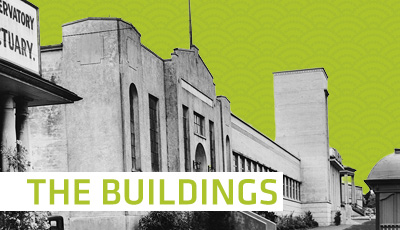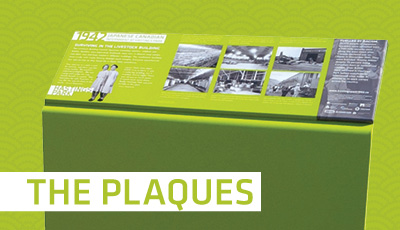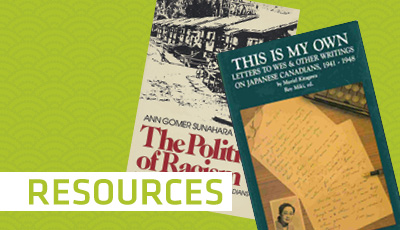We were confined within the high wire fence of Hastings Park just like caged animals. Tom Tagami, 1987
In early 1942, after Canada declared War on Japan, the Pacific National Exhibition (PNE) grounds at Hastings Park in east Vancouver were used to temporarily house Japanese Canadians who were being uprooted from the BC Coast. Over 8000 were detained in the exhibition buildings and stables at Hastings Park before being sent to internment sites in the BC interior or to work camps across the country.
Officially called the Hastings Park Manning Pool, the large grounds were also used to collect and store impounded vehicles, and set up a hospital and an office of the BC Security Commission.
This website brings together personal reflections about this time spent in Hastings Park, along with historical photographs, archival materials, and artistic responses.
For many Japanese Canadians, this was a terrible, fearful experience. They were forcibly removed from their homes, lost all of their belongings and many families were separated. The conditions at Hastings Park were extremely primitive and unsanitary. The primary memory for many people was the horrible smell, followed by the noise, the boredom and the terrible food.
We wish to provide resources and information to make the dark history of Hastings Park more visible to the general public. In 2015, four commemorative plaques were unveiled at sites around Hastings Park. Walking tours and special events around this history are also taking place. Our goal is to build awareness and promote fair and just treatment for all people, even in times of war and crisis.
In early 1942, the Pacific National Exhibition (PNE) grounds in east Vancouver were chosen to temporarily house Japanese Canadians until they could be placed in long-term camps. The large grounds were also used to collect and store impounded vehicles, and set up a hospital and an office of the BC Security Commission. READ MORE
Eleven Buildings at Hastings Park were used for various purposes, including housing men, women and children; kitchen and mess hall; infirmary; administration offices and education; along with other assorted uses. Many of the buildings are no longer standing. READ MORE
In order to keep the history and memories alive, interpretive signage regarding the wartime Japanese Canadian detention in Hastings Park have been mounted at the four remaining detention buildings: Livestock Building, Garden Auditorium, the Forum, and Rollerland. READ MORE
The Hastings Park experience filtered through the words and images of survivors, Japanese Canadian artists, and the diary of Reverend Yoshio Ono. Visitors are invited to submit their own stories or the stories of their families. READ MORE
For educators and others wishing to explore the history of Hastings Park and the Japanese Canadian wartime experience, including a teacher's guide and other resources. READ MORE
The Japanese Canadian Hastings Park Commemoration and Education Project is a partnership between various community groups, organizations, and levels of government. READ MORE









